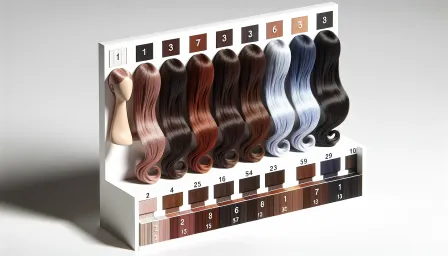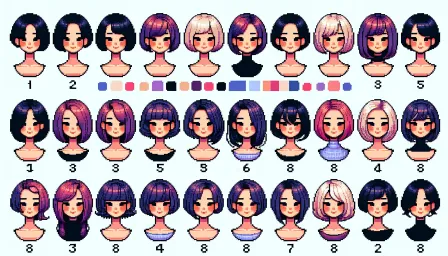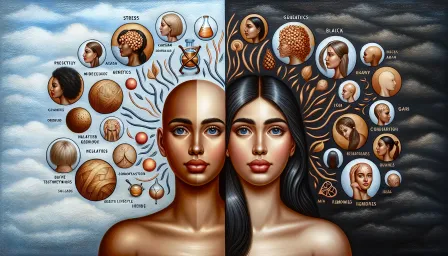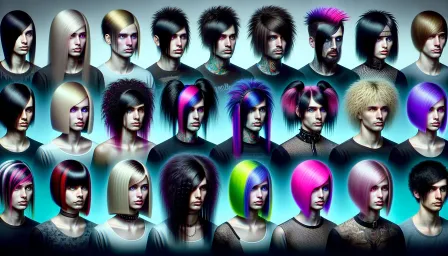Discover the Different Types of Hair Extensions: Your Ultimate Guide
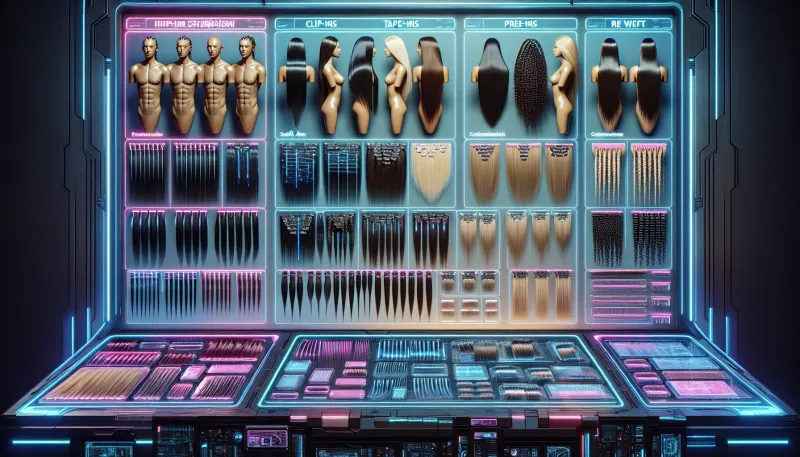
Dive into our ultimate guide to discover the different types of hair extensions. Learn about the options available and choose the best one for your needs.
Hair extensions can be a transformative beauty tool, allowing you to achieve the length, volume, or style of your dreams. However, with so many different types of hair extensions available, it can be overwhelming to decide which option is right for you. This comprehensive guide aims to provide you with all the information you need to make an informed choice.
Introduction to Hair Extensions
Hair extensions are a popular solution for those looking to enhance their natural hair. They offer versatility, convenience, and a way to experiment with different styles without making permanent changes. Whether you're seeking length, volume, or a splash of color, there is a type of hair extension that can meet your needs.
Different Types of Hair Extensions
1. Clip-In Hair Extensions
Clip-in hair extensions are one of the most popular and user-friendly options. They consist of wefts of hair that are attached to your natural hair using small, discreet clips.
- Pros: Easy to apply and remove, no professional help needed, reusable.
- Cons: May not look as natural if not applied correctly, can be uncomfortable if worn for extended periods.
- Ideal for: Special occasions or temporary changes of style.
2. Tape-In Hair Extensions
Tape-in extensions are thin strips of hair that are pre-taped and then glued to your natural hair. They blend seamlessly and offer a more permanent solution than clip-ins.
- Pros: Natural appearance, easy to maintain, suitable for fine hair.
- Cons: Requires professional application, needs regular maintenance, can be costly.
- Ideal for: Those looking for a more durable option without extensive upkeep.
3. Sew-In (Weave) Hair Extensions
Sew-in extensions are applied by braiding the natural hair into cornrows, then sewing the extensions into the braids with a needle and thread. This method is popular among people with thicker hair.
- Pros: Long-lasting, secure fit, no glue or heat used.
- Cons: Takes a long time to apply, can cause tension on the scalp, requires professional application.
- Ideal for: Those with thick, coarse hair looking for a long-term solution.
4. Fusion (Bonded) Hair Extensions
Fusion extensions involve bonding the extensions to your natural hair using a special adhesive or keratin. This method is known for its natural look and long-lasting results.
- Pros: Natural appearance, customizable, long-lasting.
- Cons: Time-consuming to apply, expensive, requires professional application, can cause damage if not maintained properly.
- Ideal for: Those seeking a highly natural look and are willing to invest in professional application and maintenance.
5. Micro-Link (Micro-Bead) Hair Extensions
Micro-link extensions involve attaching small sections of hair to the natural hair using tiny, silicone-lined beads. The beads are clamped down to hold the extensions in place.
- Pros: No glue or heat required, reusable, allows for natural movement.
- Cons: Can slip out if not installed correctly, may cause hair breakage, requires professional application.
- Ideal for: Individuals looking for a reusable and non-glue-based option.
6. Halo Hair Extensions
Halo extensions are a relatively new and innovative type of hair extension. They consist of a single weft of hair that is attached to a transparent wire. The wire sits on top of your head like a halo, blending seamlessly with your natural hair.
- Pros: Easy to use, no damage to natural hair, comfortable.
- Cons: May not suit all hair types, limited styling options.
- Ideal for: Those looking for a quick and easy way to add volume and length without a long-term commitment.
Choosing the Right Type of Hair Extensions
When deciding on the different types of hair extensions, several factors should be considered:
1. Your Hair Type
Certain extensions work better with specific hair types. For example, sew-in extensions are ideal for thick, coarse hair, while tape-ins are better suited for fine hair.
2. Lifestyle and Maintenance
Consider how much time you are willing to invest in maintaining your extensions. Fusion and micro-link extensions require regular professional upkeep, while clip-ins and halo extensions offer a more flexible, low-maintenance solution.
3. Budget
Extensions vary widely in cost. Clip-ins and halo extensions are more affordable and reusable, while fusion and sew-in methods can be more expensive due to the professional application and high-quality materials required.
4. Desired Outcome
Think about the final result you want to achieve. If you want a temporary change, clip-ins might be the best choice. For a long-lasting, natural look, fusion or sew-in extensions could be the way to go.
Conclusion
Hair extensions offer a fantastic way to enhance your natural beauty, but it's crucial to choose the right type for your needs. Understanding the different types of hair extensions can help you make an informed decision, ensuring you achieve the best possible results. Whether you opt for clip-ins, tape-ins, sew-ins, fusion, micro-link, or halo extensions, each method has its unique advantages and considerations.
Consider your hair type, lifestyle, budget, and desired outcome before making a choice. By doing so, you'll be well on your way to achieving the luscious locks you've always dreamed of.






